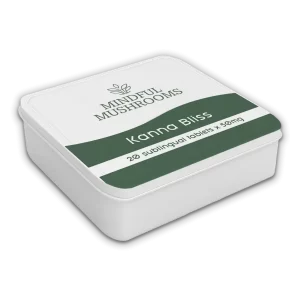The pace of modern life is both exhilarating and exhausting. We are constantly connected, endlessly informed, and rarely still. Our calendars are full, our devices never rest, and somewhere in the rush to keep up, we begin to lose touch with the present moment. It’s no wonder that stress, anxiety, and burnout have become common experiences for so many. In this relentless current, mindful living is not just helpful—it is essential.
Mindfulness is often misunderstood as a passive or mystical state, but at its core, it’s a way of engaging with life more fully. It’s about being here—with your thoughts, your surroundings, your choices. It’s not about disconnecting from reality, but about experiencing it with greater clarity and less reactivity. And in a world that pulls us in every direction, this quality of presence becomes one of the most powerful tools we have.
The fast pace we live in encourages multitasking. We eat while scrolling, walk while emailing, and talk while planning the next thing to say. Our attention is fragmented. And attention, it turns out, is finite. When it’s scattered across too many tasks, we not only become less effective—we become less alive to the moment we’re in.
Mindful living helps reclaim that attention. It’s the act of bringing your awareness back—again and again—to what’s in front of you. Whether it’s a conversation with a friend, the feel of sunlight on your face, or the flavor of your coffee, these moments become more vivid, more nourishing, more real when we fully inhabit them.
More than that, mindfulness reduces the background noise of stress. It quiets the internal chatter that keeps us reliving the past or rehearsing the future. Studies have shown that regular mindfulness practice can decrease cortisol levels, regulate the nervous system, and enhance emotional regulation. But even without formal practice, simply living with intention—making deliberate choices and noticing them—can radically shift how we experience our days.
Here’s where mindful living shows up in the real world:
- In conversations: It means listening without interrupting, giving someone your full attention—even in silence.
- In daily routines: It means doing one thing at a time—walking without checking your phone, eating without background noise, working with full focus and scheduled breaks.
- In decision-making: It means pausing before reacting, considering what aligns with your values—not just what’s urgent.
This isn’t always easy. We live in a culture that rewards speed, productivity, and constant visibility. Slowing down or pausing can feel like falling behind. But mindfulness isn’t about doing less—it’s about doing what you choose, with awareness. It’s about being present on purpose.
There’s also a growing body of neuroscience showing that mindfulness changes the structure of the brain. Regions associated with empathy, attention, and emotional regulation become stronger, while areas tied to fear and stress responses quiet down. These aren’t just metaphors—they are measurable changes, and they start with small acts of attention.
Consider the power of starting the day mindfully. Instead of checking notifications the moment you wake up, you take a few breaths, stretch, and notice how your body feels. You choose your first words, your first action. This five-minute window can define the emotional tone of your day.
Throughout the day, transitions offer golden opportunities for mindfulness. Instead of rushing from task to task, use the in-between spaces—waiting in line, closing your laptop, making tea—as gentle pauses to reset. These aren’t wasted moments; they’re invitations to come back to yourself.
Of course, mindfulness is not about perfection. There will be days you forget, moments when you fall into autopilot. That’s part of the practice. The value is not in being constantly aware—it’s in noticing when you’re not, and choosing to return, without judgment. It’s a practice of kindness toward your own humanity.
It’s also a practice of reclaiming joy. When we move too fast, we miss the small pleasures—the sound of rain, the smell of food cooking, the moment someone smiles at us. These details aren’t trivial. They are what make life beautiful. Mindfulness sharpens our ability to notice them, and in doing so, makes our lives feel fuller—even if we change nothing else.
Mindful living also reconnects us to what we truly value. When we slow down and pay attention, we often realize that some of the things driving our behavior—endless work, constant scrolling, unnecessary conflict—are not aligned with what actually matters to us. With awareness comes choice, and with choice comes freedom.
In a fast-paced world, mindfulness becomes an act of quiet resistance. It’s the refusal to be swept away by momentum, to lose the present moment in the name of busyness. It’s not about retreating from life—it’s about meeting life more clearly, more calmly, and more honestly.
You don’t need a meditation cushion or a silent retreat to live mindfully. You just need to start noticing. Notice the breath. Notice the body. Notice the emotion. Notice the space between thoughts. From that noticing comes presence. And from presence comes the ability to respond—not just react—to whatever life brings your way.
So much of modern stress comes from speed without direction, input without integration. Mindful living doesn’t eliminate responsibilities or erase challenges. But it does offer a different way of carrying them—one that honors your energy, invites peace, and brings you home to the only moment you ever really have: this one.




